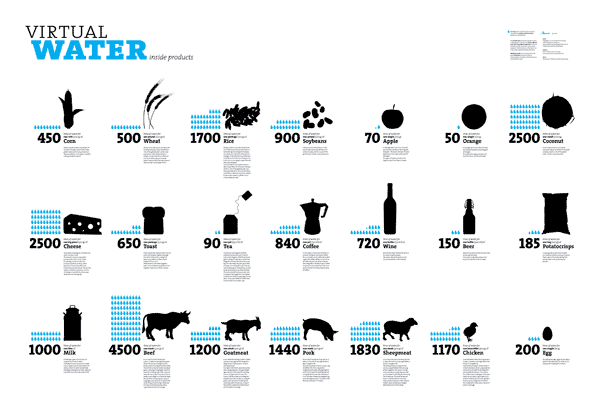'We need to brace for what could easily be humanity's greatest short-term challe nges.' - Dr Catley-Carlson
nges.' - Dr Catley-Carlson
Scientists have warned water demand in many countries will exceed supply by 40 per cent within 20 years
A new way of thinking about water is needed as looming shortages threaten communities, agriculture and industry, experts said.
In the next two decades, a third of humanity will have only half the water required to meet basic needs, said researchers.
Agriculture, which soaks up 71 per cent of water supplies, is also likely to suffer, affecting food production.Around 300 scientists, policy makers, and economists attended the international meeting in Ottawa hosted by the Canadian Water Network (CWN) in the run-up to U.S. World Water Day on March 22. The vast amount of 'virtual water' used in farming and industry was highlighted by Nicholas Parker, chairman of international environmental technology consultants Cleantech Group. Virtual water describes the volume of water 'embedded' in the production process.

Manufacturing a desk top computer, for example, requires 1.5 tonnes, or 1,500 litres of water, said Mr Parker.A pair of denim jeans used up six tonnes, a kilogram of wheat one tonne, a kilogram of chicken three to four tonnes, and a kilogram of beef 15 to 30 tonnes. 'What people don't often realise is how much water there is in everything we make and buy, from T-shirts to wine,' Mr Parker added.Dr Nicholas Ashbolt, from the US Environmental Protection Agency (EPA) said water conservation measures could 'easily' reduce household demand in developed countries by 70 per cent. Examples of water-saving devices included dry composting toilets with urine separation systems which operated like 'garden compost heaps'. Diverted water was re-used in agriculture while remaining waste was turned into soil-enriching organic compost. 'These techniques can be used safely, even in fairly dense urban settings,' said Dr Ashbolt.
Read more at DailyMail
Scientists have warned water demand in many countries will exceed supply by 40 per cent within 20 years
A new way of thinking about water is needed as looming shortages threaten communities, agriculture and industry, experts said.
In the next two decades, a third of humanity will have only half the water required to meet basic needs, said researchers.
Agriculture, which soaks up 71 per cent of water supplies, is also likely to suffer, affecting food production.Around 300 scientists, policy makers, and economists attended the international meeting in Ottawa hosted by the Canadian Water Network (CWN) in the run-up to U.S. World Water Day on March 22. The vast amount of 'virtual water' used in farming and industry was highlighted by Nicholas Parker, chairman of international environmental technology consultants Cleantech Group. Virtual water describes the volume of water 'embedded' in the production process.

Manufacturing a desk top computer, for example, requires 1.5 tonnes, or 1,500 litres of water, said Mr Parker.A pair of denim jeans used up six tonnes, a kilogram of wheat one tonne, a kilogram of chicken three to four tonnes, and a kilogram of beef 15 to 30 tonnes. 'What people don't often realise is how much water there is in everything we make and buy, from T-shirts to wine,' Mr Parker added.Dr Nicholas Ashbolt, from the US Environmental Protection Agency (EPA) said water conservation measures could 'easily' reduce household demand in developed countries by 70 per cent. Examples of water-saving devices included dry composting toilets with urine separation systems which operated like 'garden compost heaps'. Diverted water was re-used in agriculture while remaining waste was turned into soil-enriching organic compost. 'These techniques can be used safely, even in fairly dense urban settings,' said Dr Ashbolt.
Read more at DailyMail
GOOD delivers yet another strikingly clean infographic on how to reduce your water footprint by changing your diet and lifestyle. The chart is composed of both direct water usage (how much water you use) and virtual water usage (how much water was used to make the thing you’re using).
